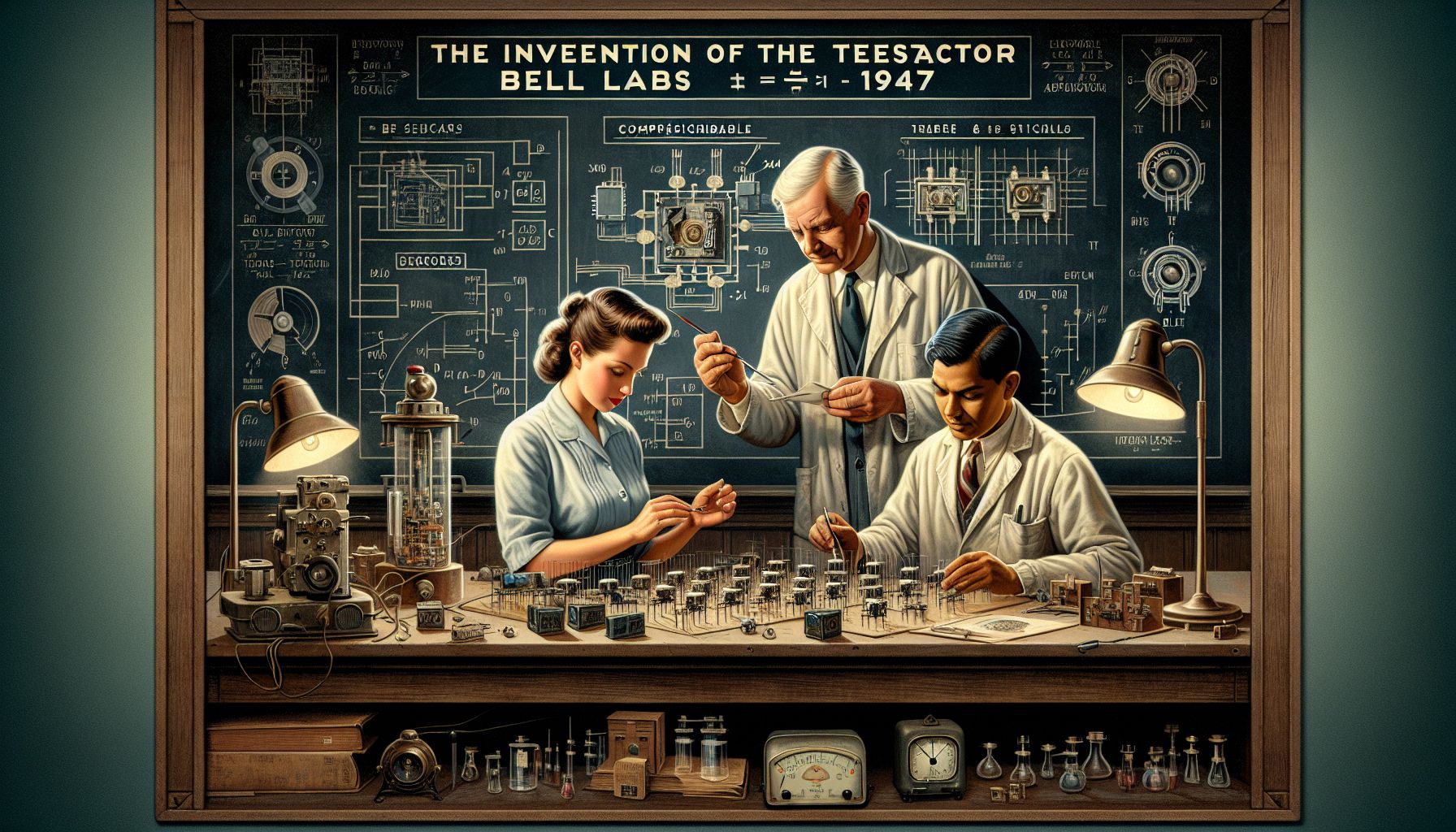📌 Let’s explore the topic in depth and see what insights we can uncover.
⚡ “Journey with us as we reveal the singular moment that silenced vacuum tubes and launched our world into the digital age. Welcome to the birthplace of the transistor - Bell Labs, 1947.”
The 20th-century was a period of rapid technological advancements that transformed the world as we know it. Among these, one invention stands out due to its profound and lasting impact on virtually all aspects of modern life — the transistor. Invented at Bell Labs in 1947, this tiny device revolutionized the electronics industry, paving the way for the development of today’s digital economy. In this blog post, we’re going to take a deep dive into the fascinating story of the invention of the transistor, an ingenious device that made our modern digital age possible.
The Pioneers: Shockley, Bardeen, and Brattain

Unveiling the birth of the transistor, 1947.
The story of the transistor begins with three brilliant minds: William Shockley, John Bardeen, and Walter Brattain. These three scientists were working at Bell Labs, the research arm of the telephone company AT&T, when they stumbled upon the concept that would forever change the world of electronics. The trio was initially tasked with finding a solid-state alternative to vacuum tubes, which were bulky, energy-consuming, and prone to burnout. After several years of rigorous research and countless failed experiments, they finally developed a tiny, low-power device capable of amplifying electrical signals. This was the first point-contact transistor.
The Eureka Moment: Birth of the Point-Contact Transistor
On December 16, 1947, Bardeen and Brattain, guided by Shockley’s theories, successfully tested the world’s first point-contact transistor. This was a momentous event in the history of technology. The device was assembled from a slab of germanium, a semi-metallic element, with two gold point contacts applied to its surface. While the device was far from perfect — it was temperamental and difficult to manufacture reliably — it demonstrated that a solid-state device could control and amplify an electric current, a function previously only achievable with vacuum tubes.
A New Dawn: The Junction Transistor
While the point-contact transistor was a significant breakthrough, it was Shockley’s brainchild, the junction transistor, that would truly change the world. Unhappy with the limitations of the point-contact design, Shockley developed a more reliable and practical transistor design that used layers of different types of semiconductor materials to control the flow of current. This new design made transistors much more reliable and easier to produce. In 1951, Bell Labs announced the junction transistor to the public, marking the beginning of the solid-state electronics revolution.
Revolutionizing the World: The Impact of the Transistor
The invention of the transistor was a game-changer for the electronics industry and society as a whole. Here are some of the ways in which transistors revolutionized the world:
Miniaturization
🧩 As for Transistors, they’re much smaller than vacuum tubes. This miniaturization led to the development of compact, portable devices like radios, calculators, and eventually, computers.
Energy Efficiency
Transistors consume far less power than vacuum tubes, making electronic devices more energy-efficient.
Reliability
🧩 As for Transistors, they’re more reliable than vacuum tubes, which had a tendency to burn out.
Cost-Effective
🧩 As for Transistors, they’re cheaper to produce than vacuum tubes, making electronic devices more affordable for the general public. The transistor’s influence can be seen in virtually all modern electronic devices, from smartphones and laptops to televisions and medical equipment. It’s no exaggeration to say that without the transistor, our digital age would look very different.
🧭 Conclusion
The invention of the transistor at Bell Labs in 1947 marked the birth of the modern digital age. It was an extraordinary achievement of three brilliant scientists — Shockley, Bardeen, and Brattain — who dared to dream of a world where information could be processed rapidly and efficiently on a tiny scale. Their invention not only revolutionized the electronics industry but also transformed society as a whole, paving the way for the development of the modern digital world we live in today. The transistor is a testament to human ingenuity and the power of science to change the world — a tiny device with an impact as massive as the digital age it ushered in. So, the next time you’re scrolling through your smartphone or working on your laptop, spare a thought for the humble transistor. It might be small, but its influence is immeasurable. After all, without the transistor, the digital world as we know it would simply not exist.
🤖 Stay tuned as we decode the future of innovation!
